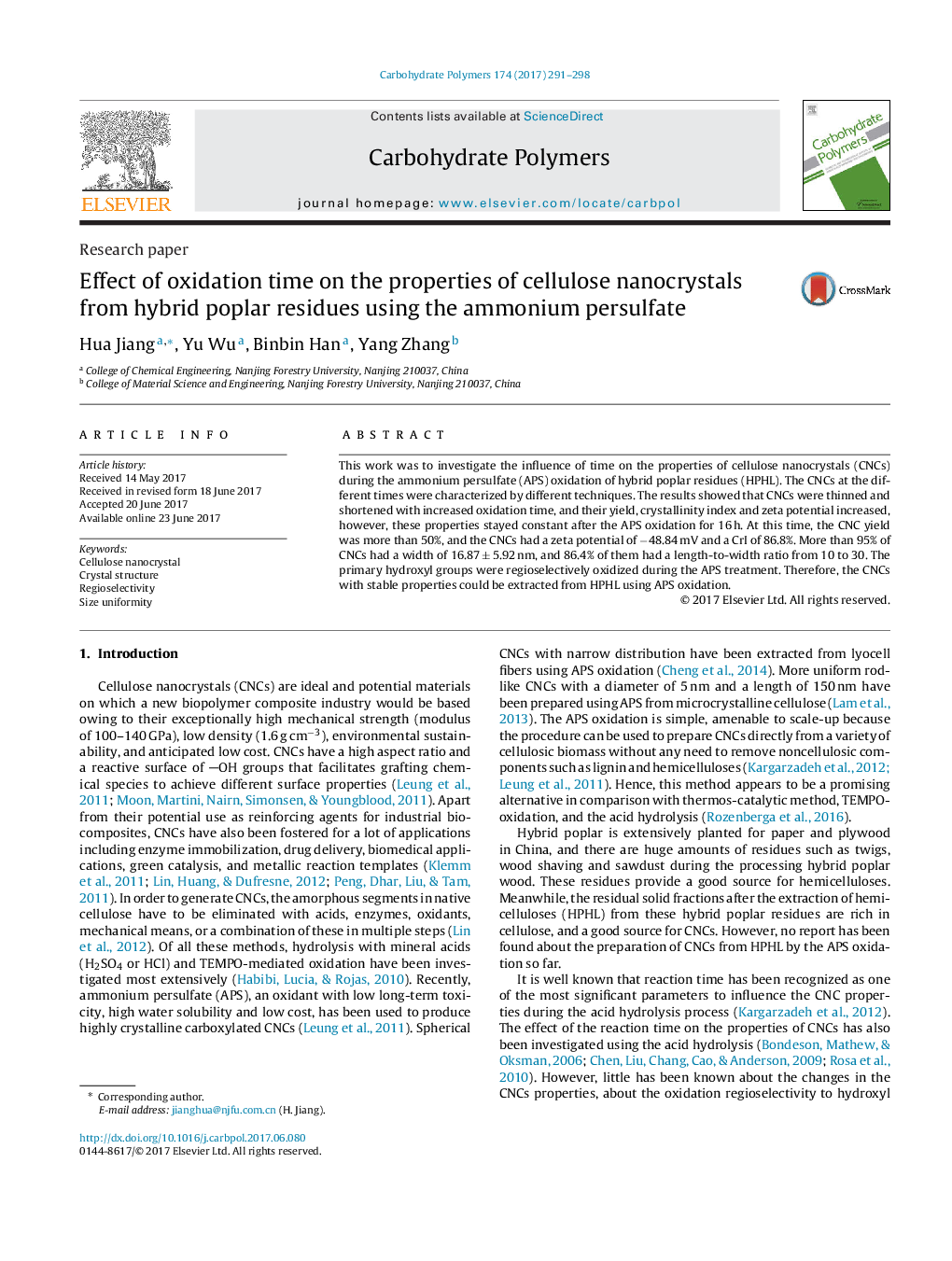| Article ID | Journal | Published Year | Pages | File Type |
|---|---|---|---|---|
| 5156810 | Carbohydrate Polymers | 2017 | 8 Pages |
Abstract
This work was to investigate the influence of time on the properties of cellulose nanocrystals (CNCs) during the ammonium persulfate (APS) oxidation of hybrid poplar residues (HPHL). The CNCs at the different times were characterized by different techniques. The results showed that CNCs were thinned and shortened with increased oxidation time, and their yield, crystallinity index and zeta potential increased, however, these properties stayed constant after the APS oxidation for 16 h. At this time, the CNC yield was more than 50%, and the CNCs had a zeta potential of â48.84 mV and a CrI of 86.8%. More than 95% of CNCs had a width of 16.87 ± 5.92 nm, and 86.4% of them had a length-to-width ratio from 10 to 30. The primary hydroxyl groups were regioselectively oxidized during the APS treatment. Therefore, the CNCs with stable properties could be extracted from HPHL using APS oxidation.
Related Topics
Physical Sciences and Engineering
Chemistry
Organic Chemistry
Authors
Hua Jiang, Yu Wu, Binbin Han, Yang Zhang,
